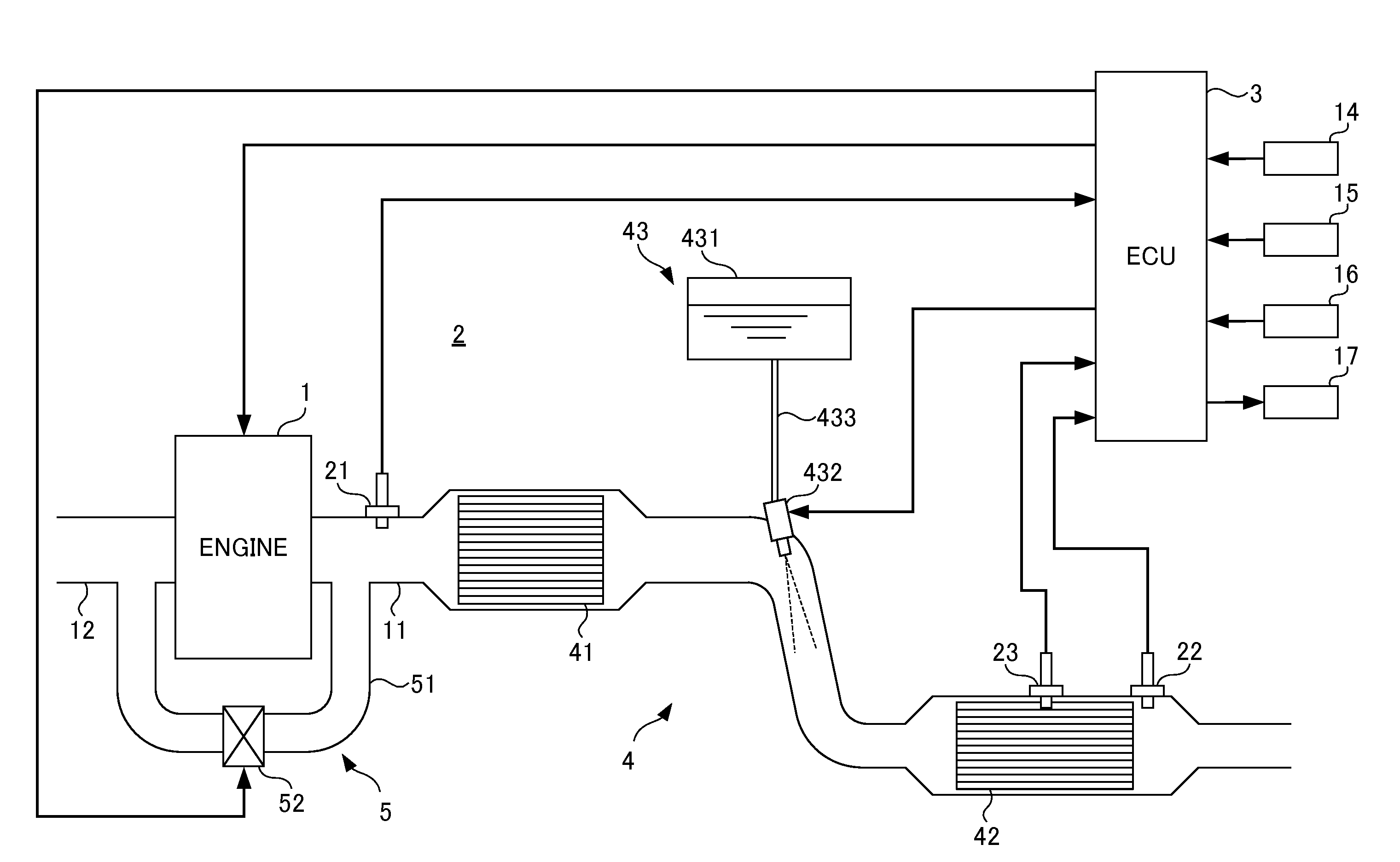Exhaust purification system for internal combustion engine
a technology of exhaust gas purification system and internal combustion engine, which is applied in the direction of electrical control, process and machine control, instruments, etc., can solve the problems of reducing the oxidation performance of hc or co under the exhaust gas of lean equivalence ratio, not sufficiently considering the point, and increasing the cost proportionally, so as to achieve high precision, maintain high nox purification rate, and high precision
- Summary
- Abstract
- Description
- Claims
- Application Information
AI Technical Summary
Benefits of technology
Problems solved by technology
Method used
Image
Examples
modified example
[0215]Hereinafter, a modified example of the feedback identifier of the above-mentioned embodiment will be explained.
[0216]FIG. 27 is a block diagram showing the sequence of computations (refer to formulas (11-1) to (16-4) above) of a feedback identifier 32 of the above-mentioned embodiment.
[0217]The feedback identifier 32 is configured to include: the LAF sensor output estimation operation unit 321 that calculates the estimated value φlaf_hat(k) of the LAF sensor output according to formulas (11-1) and (11-2) using the injection amount-sensor output model including the model parameters A,B and response delay coefficient C with the fuel injection amount Gfuel (k-1) and reference value Bbs (refer to formula (9-4)) as inputs; and the identification operation unit 322 that successively identifies the values A(k), B(k) of the two model parameters so that the identification error E_id(k) between the estimated value φlaf_hat(k) and output value φlaf(k) of the LAF sensor (refer to formula ...
PUM
 Login to View More
Login to View More Abstract
Description
Claims
Application Information
 Login to View More
Login to View More - R&D
- Intellectual Property
- Life Sciences
- Materials
- Tech Scout
- Unparalleled Data Quality
- Higher Quality Content
- 60% Fewer Hallucinations
Browse by: Latest US Patents, China's latest patents, Technical Efficacy Thesaurus, Application Domain, Technology Topic, Popular Technical Reports.
© 2025 PatSnap. All rights reserved.Legal|Privacy policy|Modern Slavery Act Transparency Statement|Sitemap|About US| Contact US: help@patsnap.com



